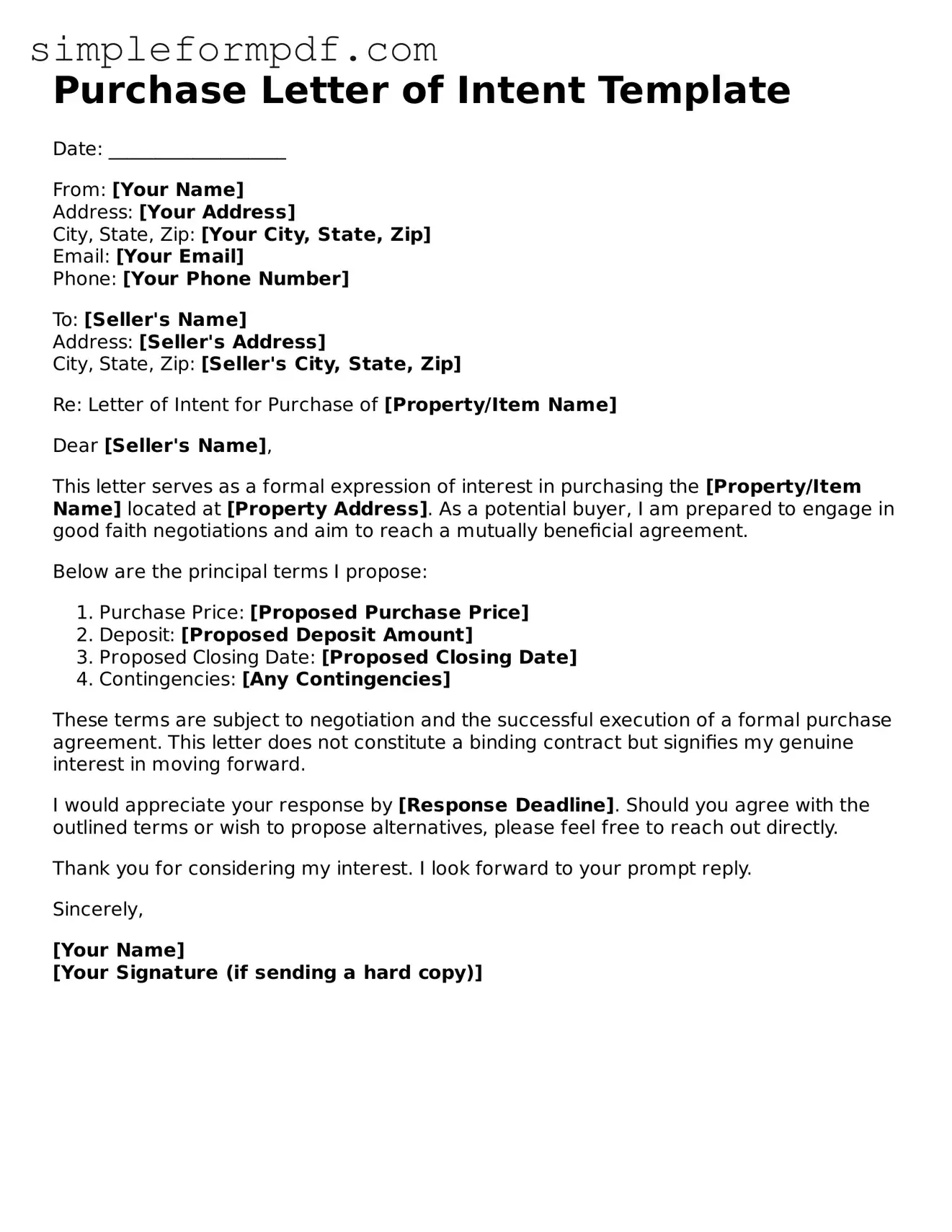Purchase Letter of Intent Template
Date: ___________________
From: [Your Name]
Address: [Your Address]
City, State, Zip: [Your City, State, Zip]
Email: [Your Email]
Phone: [Your Phone Number]
To: [Seller's Name]
Address: [Seller's Address]
City, State, Zip: [Seller's City, State, Zip]
Re: Letter of Intent for Purchase of [Property/Item Name]
Dear [Seller's Name],
This letter serves as a formal expression of interest in purchasing the [Property/Item Name] located at [Property Address]. As a potential buyer, I am prepared to engage in good faith negotiations and aim to reach a mutually beneficial agreement.
Below are the principal terms I propose:
- Purchase Price: [Proposed Purchase Price]
- Deposit: [Proposed Deposit Amount]
- Proposed Closing Date: [Proposed Closing Date]
- Contingencies: [Any Contingencies]
These terms are subject to negotiation and the successful execution of a formal purchase agreement. This letter does not constitute a binding contract but signifies my genuine interest in moving forward.
I would appreciate your response by [Response Deadline]. Should you agree with the outlined terms or wish to propose alternatives, please feel free to reach out directly.
Thank you for considering my interest. I look forward to your prompt reply.
Sincerely,
[Your Name]
[Your Signature (if sending a hard copy)]
